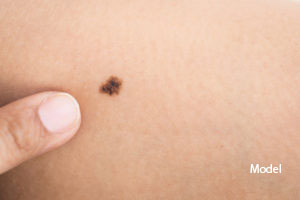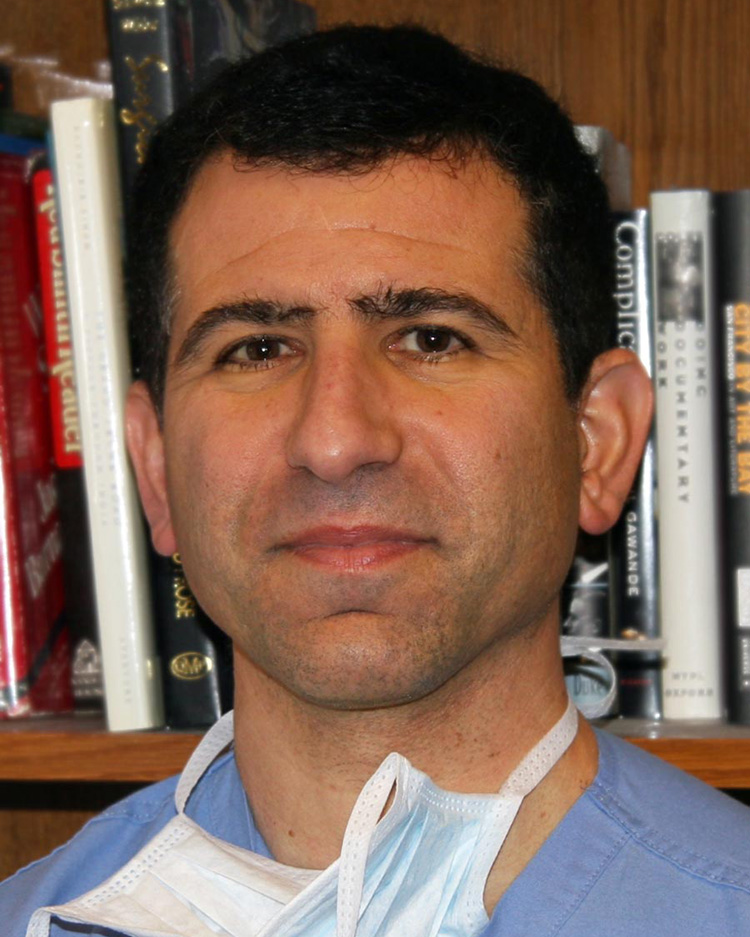Malignant Melanoma
Malignant melanoma is a dangerous form of skin cancer and results in more lives lost than any other skin cancer. It is very important that you seek a skin cancer screening immediately if you notice a suspicious mole or growth that may be a melanoma. At the Gladstone Clinic led by Dr. Hayes B. Gladstone, MD, skin cancer screening, surgery, and treatment for malignant melanoma are available.
What Is Malignant Melanoma?

Some forms of skin cancer, such as basal cell carcinoma or squamous cell carcinoma, rarely spread. That’s not the case with melanoma, a type of skin cancer that starts in the melanocytes, the skin cells responsible for producing moles. Melanoma has increased more than any other cancer over the past half century in the United States. You are at an increased risk if you have an immediate family member who has had melanoma, had bad sunburns as a child, have many atypical moles. However, melanomas can also just appear. They affect the young and the old. These tumors can often grow quickly and progress rather rapidly, spreading to other parts of the body and become fatal.
Prevention and Early Detection Are Key for Melanoma Survival
If you have any question about a suspicious lesion, you should schedule an appointment with Dr. Gladstone. Frequent self-exams, or by your partner of areas you can’t see, or taking photos to document moles helps.
Knowing the ABCDEs will help you determine if you need to have Dr. Gladstone examine your moles.
- Asymmetry. The mole or growth is not symmetrical.
- Border. The mole or growth has a border that is jagged or blurry.
- Color. The color has changed over time, or a mole contains various colors. A PINK color that persists longer than 4 weeks should be professionally examined.
- Diameter. The mole or growth is larger than 1/4 inch in diameter or is small but growing in size
- Evolving. The mole or growth is changing over time.
Of course, if you have any questions, Dr. Gladstone will be happy to examine your lesion and provide his expert opinion.
If Dr. Gladstone determines I have a Suspicious Mole, What Happens Next?

Dr. Gladstone will perform a skin biopsy. In most patients, this will involve stitches. The numbing injection for the biopsy stings for a few seconds, but then your skin becomes numb. Dr. Gladstone and his staff will tell you how to take care of the site. Generally, there isn’t any downtime. The stitches stay in for 1-2 weeks. There could be a small scar. Your skin sample is sent to an expert dermatopathologist who will interpret your skin sample under the microscope. It generally takes about a week.
What is the Treatment for Melanoma
That depends on the depth of melanoma. It is a shallow melanoma, an excision with margins will cure the melanoma. If it is deeper or has aggressive characteristics, a sentinel lymph node study may be required or other forms of treatment. Dr. Gladstone will thoroughly discuss those options with you and refer you to an appropriate specialist if necessary.
Does Insurance Cover Melanoma Screenings and Treatment
Your insurance should cover melanoma examinations and treatment. Examining your skin to prevent melanoma is considered medically necessary as is the treatment. The Gladstone Clinic takes Medicare and most PPO insurance. You will be responsible for your Co-Pay and Deductible.
Put your mind at ease with early screening for any skin lesion that you suspect might be dangerous or you are worried about. The Gladstone Clinic led by Dr. Hayes B. Gladstone, MD provides comprehensive screening, surgery, and treatment for skin cancer for residents of San Ramon, Danville, Pleasanton, Manteca, San Francisco, and the surrounding communities in California. Please contact us today to schedule a skin cancer screening.
*Individual results may vary.


